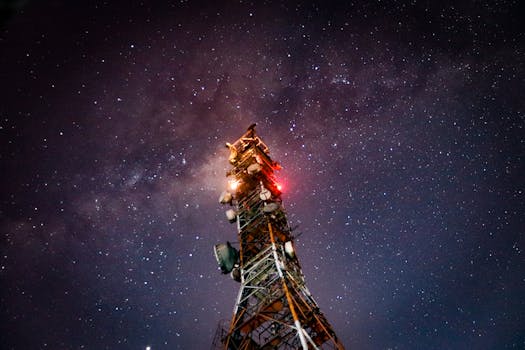
Introduction to Starlink
Starlink is the focus keyword for this article, and it represents a revolutionary step in the field of satellite technology and global internet connectivity. Developed by SpaceX, Starlink is a constellation of low Earth orbit satellites designed to provide high-speed, low-latency internet connectivity to every corner of the globe. This ambitious project aims to bridge the digital divide, ensuring that everyone, regardless of their geographical location, has access to fast and reliable internet services.
The concept of Starlink was first introduced by Elon Musk, the founder of SpaceX, with the vision of creating a network that could provide internet access to the entire world, including areas where traditional fiber-optic cables cannot reach. The project began taking shape in the late 2010s, with SpaceX launching its first batch of Starlink satellites in 2019. Since then, numerous launches have taken place, gradually expanding the constellation and bringing the world closer to achieving seamless global connectivity.
How Starlink Works
Starlink operates by using a constellation of thousands of small satellites orbiting the Earth at an altitude of approximately 550 kilometers. These satellites are equipped with advanced technology that enables them to communicate with each other and with ground stations, creating a network that covers the entire planet. When a user sends data through the Starlink system, the signal is transmitted to the nearest Starlink satellite, which then forwards the data to the destination, either directly to another satellite or to a ground station, and then to its final destination on the Earth’s surface.
The low Earth orbit of Starlink satellites is crucial for reducing latency, which is the time it takes for data to travel from the user’s device to the satellite and back to the Earth. Traditional geostationary satellites, which orbit the Earth at much higher altitudes, can introduce significant latency, making real-time communication and applications like video streaming or online gaming impractical. Starlink’s low orbit significantly minimizes this latency, offering a more responsive and interactive internet experience.
Impact and Applications of Starlink
Starlink has the potential to revolutionize the way we access and use the internet. By providing high-speed internet to remote and underserved areas, Starlink can bridge the digital divide, enabling access to information, education, and economic opportunities that were previously out of reach. This can be particularly transformative for rural communities, where the lack of reliable internet connectivity has hindered development and isolated residents from the global community.
Beyond connecting the unconnected, Starlink can also play a critical role in disaster recovery and emergency response situations. In the aftermath of natural disasters, when traditional communication infrastructure is often destroyed or severely damaged, Starlink’s satellite-based network can provide a vital means of communication, facilitating rescue efforts and the distribution of critical information to affected populations.
Furthermore, Starlink can support a wide range of applications and services, from remote healthcare and virtual education to gaming and entertainment. The potential for Starlink to enable new use cases, such as autonomous vehicles and smart cities, by providing the necessary connectivity infrastructure, is vast and promising.
Challenges and Future Developments
Despite the promising potential of Starlink, the project faces several challenges. One of the significant concerns is the issue of space debris, as the launch of thousands of satellites into low Earth orbit raises questions about the long-term sustainability of space environments. SpaceX has been working on designing satellites that can deorbit and burn up in the atmosphere at the end of their life cycle, minimizing the risk of contributing to space debris.
Another challenge is the regulatory environment, as the deployment of such a large satellite constellation requires compliance with various international and national regulations. SpaceX has been engaged with regulatory bodies to ensure that Starlink operates within legal frameworks and does not interfere with other satellite systems or astronomical observations.
Looking forward, the future of Starlink is exciting and dynamic. As the constellation continues to expand, we can expect to see improvements in service quality, coverage, and the introduction of new features and applications. The success of Starlink could also pave the way for other satellite internet constellations, driving innovation and competition in the space technology sector.
